Today, we bring you stories proving that we do understand some things, like black holes, and that we have forgotten other things, like that the Earth’s crust can sag under the weight of ice. It’s all a lot more complicated than we like to think. But it sure is pretty, and when the science makes your head hurt, our What’s Up segment will fill your eyes with some beauty.
Podcast
Show Notes
Dust in M77 hides an old school monster
- ESO press release
- “Thermal imaging of dust hiding the black hole in NGC 1068,” Violeta Gámez Rosas et al., 2022 February 16, Nature
How collisions can change a planet’s orbit
- How ‘hot Jupiters’ may get their weirdly tight orbits (Science News)
- “Origins of Hot Jupiters from the Stellar Obliquity Distribution,” Malena Rice, Songhu Wang, and Gregory Laughlin, 2022 February 18, The Astrophysical Journal Letters
Weighty ice tilted ancient landscape
- UCSC press release
- “Glacial isostatic adjustment directed incision of the Channeled Scabland by Ice Age megafloods,” Tamara Pico et al., 2022 February 22, PNAS
Cold oceans may slow glacial melt
- AGU press release
- “North Atlantic Cooling is Slowing Down Mass Loss of Icelandic Glaciers,” Brice Noël et al., 2022 January 24, Geophysical Research Letters
What’s Up: How to Star Hop
- Messier 44 (The Munich Astro Archive)
- PDF: The proper motion and the distance of the Praesepe cluster (ADS)
- Parallaxes and proper motions for 20 open clusters as based on the new Hipparcos catalogue (ADS)
- “The Distance to the Pleiades According to Gaia DR2,” Guillermo Abramson, 2018 August, RNAAS
Transcript
The science that dictates our planet is the exact same physics that affects our entire universe. Trying to understand everything around us is just as simple as taking into account all the forces and factors that interact to make everything we see.
And it is just that hard.
Today, we bring you stories proving that we do understand some things, like black holes, and that we have forgotten other things, like that the Earth’s crust can sag under the weight of ice. It’s all a lot more complicated than we like to think.
But it sure is pretty, and when the science makes your head hurt, our What’s Up segment will fill your eyes with some beauty.
All of this now, right here on the Daily Space.
I am your host Dr. Pamela Gay.
And we’re here to put science in your brain.
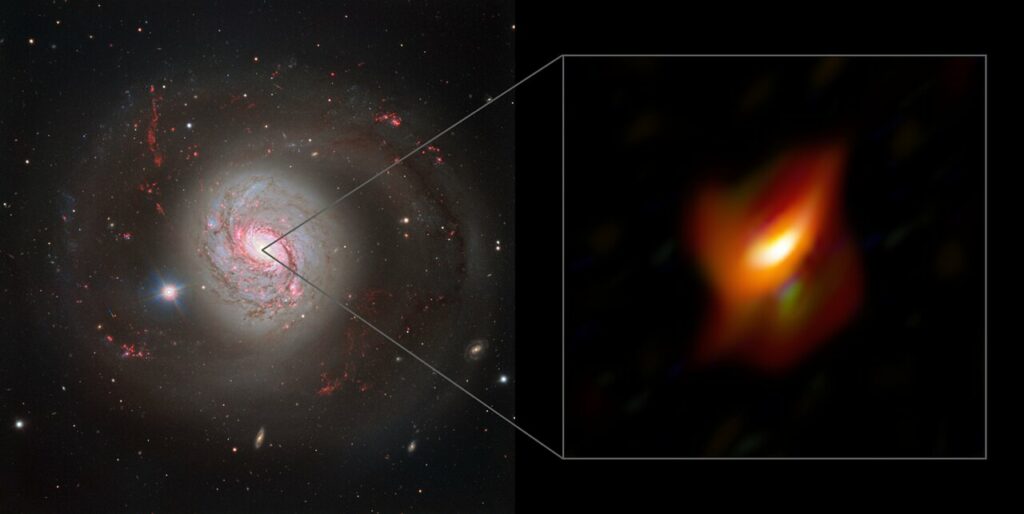
I think every generation of astronomers has its own reason to be glad they came of age when they did. For those older than me, there was Apollo and the ability to be part of the first planetary missions. For the generation before, it was the advent of radio astronomy and spacecraft in general.
Our field is one that advances at the pace of technology and we each can take joy in the new things that come along in our lifetimes. For me, I look at one amusing advancement and a whole series of serious ones. That amusing advancement? The transition from researchers using hand-drawn transparencies to using PowerPoint presentations.
Early in my career, I was treated to countless drawings of various imaginary monsters sitting in the cores of galaxies that were labeled everything from ‘quasar’ to ‘Seyfert’ or just plain ‘active galaxy’. At the time, it was unknown why all these different systems looked different from one another and why those differences were bigger or smaller depending on the wavelength of light being looked at.
Somewhere along the line, coincident with PowerPoint becoming more common, a unified theory of active galactic nuclei (AGN) was put forward that explained all these objects are varying configurations of a galaxy with dust and gas swirling into a supermassive black hole and jets of material being ejected away with a magnetic field. Exactly what we see depends on how much material is being consumed and the angle we are seeing the system at. When we see a galaxy edge-on, versus looking straight down the jet, the systems can look completely different, but it is all just a trick of perspective.
And this theory has consistently worked to explain the myriad feeding black holes we’ve peered at, but we haven’t had those final proof images that demonstrate “yes, all these things are the same”. At least not until now.
New images of the galaxy Messier 77, which is a good small telescope object, have allowed astronomers to resolve the material closest to the heart of this system and see how it is blocking our view of the galaxy’s supermassive black hole. This is the first time there has been clear observational evidence of material completely blocking the light from a black hole’s surroundings.
These results appear in the journal Nature in a paper led by Violeta Gámez Rosas and showcase the power of the Very Large Telescope’s four massive telescopes being used together. As Gámez Rosas explains: The real nature of the dust clouds and their role in both feeding the black hole and determining how it looks when viewed from Earth have been central questions in AGN studies over the last three decades. Whilst no single result will settle all the questions we have, we have taken a major step in understanding how AGNs work.
I wish more of those hand-drawn monsters had made it into the PowerPoint age and lived on in digital prosperity. That said, I’m really glad future astronomers can say, “Yes, we know all these things are driven by the same physics.”
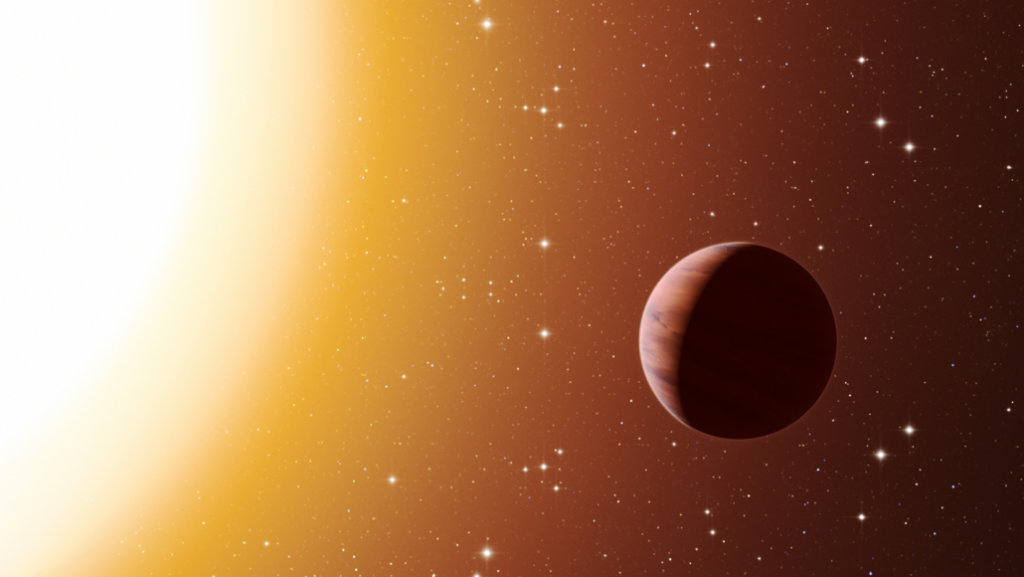
Ultimately, we can understand our universe for one very simple reason: the science here and now is the same as the science everywhere and everywhen else. This means that just like we need a story that explains all the different-looking galaxies using the same physics, we also need a story that explains all the different solar systems with the same physics, such as explaining both the cold Jupiters like we have and the hot ones we’ve found orbiting so many stars on orbits smaller than Mercury’s.
And, according to a new paper accepted into The Astrophysical Journal Letters, a solution may come in the form of lucky and unlucky collisions.
In recent years, we’ve come to understand that our solar system was a very violent place, with a Mars-sized world hitting the early Earth and causing the formation of the Moon and other collisions fluffing out the core of Jupiter and flipping Venus on its head. It was very much a planet-hit-planet solar system, and there is even some evidence that interactions with other stars may have had their own influence on our solar system’s development. It was also a planet-yeet-planet solar system, with the gravitational tugs of Saturn and Jupiter hurling Uranus and Neptune into their distant locations.
In the grand scheme of things, our worlds have been lucky. We live in a magnificent system with a diversity of science, and no worlds are currently being destroyed by the Sun or flung to new places by our biggest planets.
But what if it went another way? In this new paper, coming from Malena Rice, Songhu Wang, and Gregory Laughlin, models show that interactions with a massive world or not too distant stars can evolve a world’s orbit, placing them on highly tilted or elongated paths that eventually migrate toward their Sun, taking a healthy planet and putting it in a dangerously hot kind of place.
In the end, what we see is just a reflection of what collisions and interactions may have happened in the past, and it is the unlucky planet that ends up becoming a hot Jupiter.
One story, many worlds, all fit together. This is how science should be.
And all these bits of science that explain worlds beyond our world have to explain our world, too, and sometimes, our planet’s evolution can literally tilt the science.
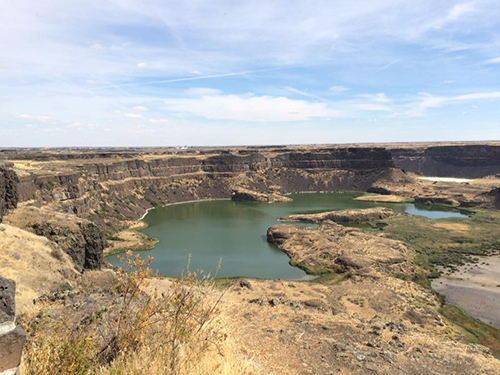
If you live in North America, at some point in your life you need to explore the surreal landscapes that stripe from the American Southwest of the painted desert up north and east through the petrified forest and the moraines of Wisconsin and the craters of Canada. My favorite region is the canyonlands and the badlands where past floods carved the twisted landscape that has dried to a magnificent desert.
Trying to understand the weird beauty of this landscape has been a challenge to geologists but in a case of “oh, in retrospect that makes a world of sense”, researchers have pointed out a missing variable that makes everything a lot easier to understand.
According to new research in Proceedings of the National Academy of Sciences and led by Tamara Pico: the land we see today is at a level and a tilt that reflects its hot, dry, modern reality, but when those canyons formed, the landscape was tilted and weighted down by massive glaciers — glaciers that melted in canyon-forming megafloods.
I love this story for a lot of reasons. Here in the U.S. Midwest, we have random earthquakes that result from the land still rebounding from glaciers. The past crush of ice still affects us today. There are also ancient stories from myriad indigenous cultures that tell of past massive floods. This research connects our modern stories and reality with the ancient landscape.
In a press release on this paper, Pico’s results are summarized as follows: During the height of the last ice age, vast ice sheets covered much of North America. They began to melt about 20,000 years ago, and the Missoula megafloods occurred between 18,000 and 15,500 years ago. People have been looking at high water marks and trying to reconstruct the size of these floods, but all of the estimates are based on looking at the present-day topography. This paper shows that the ice age topography would have been different over broad scales due to the deformation of Earth’s crust by the weight of the ice sheets… During this period, the deformation of the Earth’s crust in response to the growing and shrinking of ice sheets would have changed the elevation of the topography by hundreds of meters.”
What we see today is shaped by the past, but it wasn’t shaped by just one thing. It was floods and the weight of ice, and to understand what we see, we really have to take into account all the forces. It’s obvious in retrospect but apparently way too easy to forget. And now we will remember: don’t look at the landscape as it is now but imagine where it was in the past when trying to understand what has happened in the past.
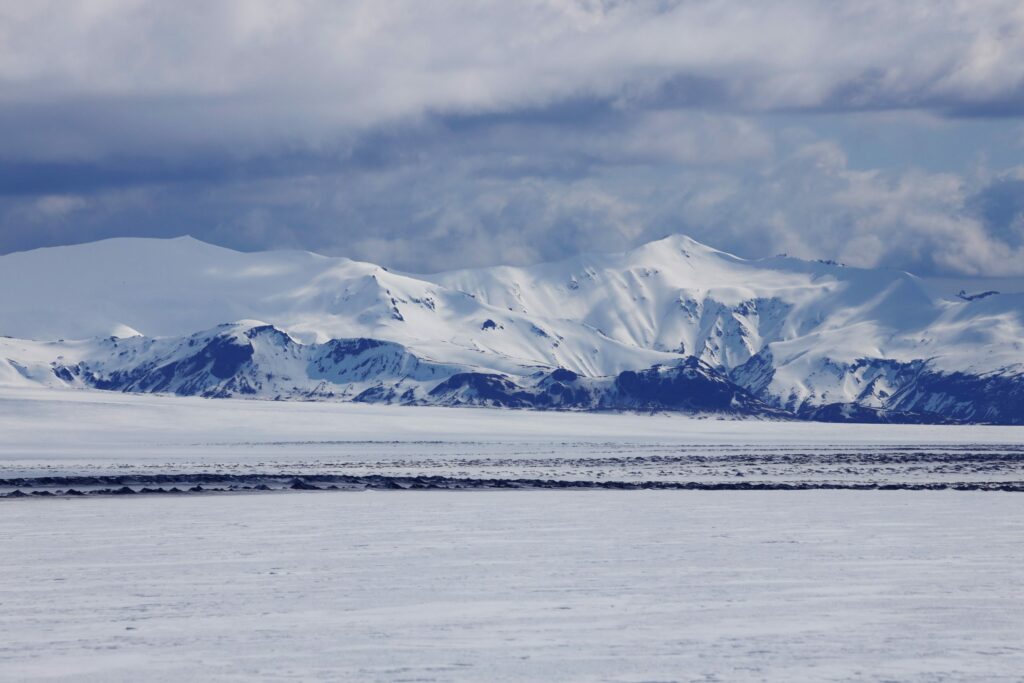
While our modern world certainly isn’t experiencing an ice age, there is definitely enough ice that I worry about what will happen as glaciers continue their modern habit of melting.
We are experiencing a warming period like nothing the Earth has experienced before, and as glaciers race toward the oceans, we often see accelerated melting at the interface between the ice and the sea. At least this is generally the case. New research highlighted by the American Geophysical Union finds that a particularly cold blob of water in the North Atlantic has been slowing the melt of Iceland’s glaciers since about 2011. New models show this cold blob, called the “Blue Blob” (really, it’s called the “Blue Blob”), this cold region should continue to slow ice loss until about 2050.
This region of water is about 1.4 degrees Celsius colder than the surrounding ocean and is able to chill the air above it. Lead researcher Brice Noel points out that: It’s crucial to have an idea of the possible feedbacks in the Arctic because it’s a region that is changing so fast. It’s important to know what we can expect in a future warmer climate.
As so often happens, this bit of good news isn’t without a dark side. The Blue Blob is in a region of the ocean experiencing a long-term cooling trend as the ocean circulation patterns change, and warm waters fail to travel north to warm the ocean and Europe. While the globe on average will warm, overall conditions will become more extreme, but if this means some more glaciers survive, at least there will be extreme weather in regions still above the sea.
I think it’s time to look up. Next, Erik Madaus brings us information on star-hopping through the sky.
What’s Up
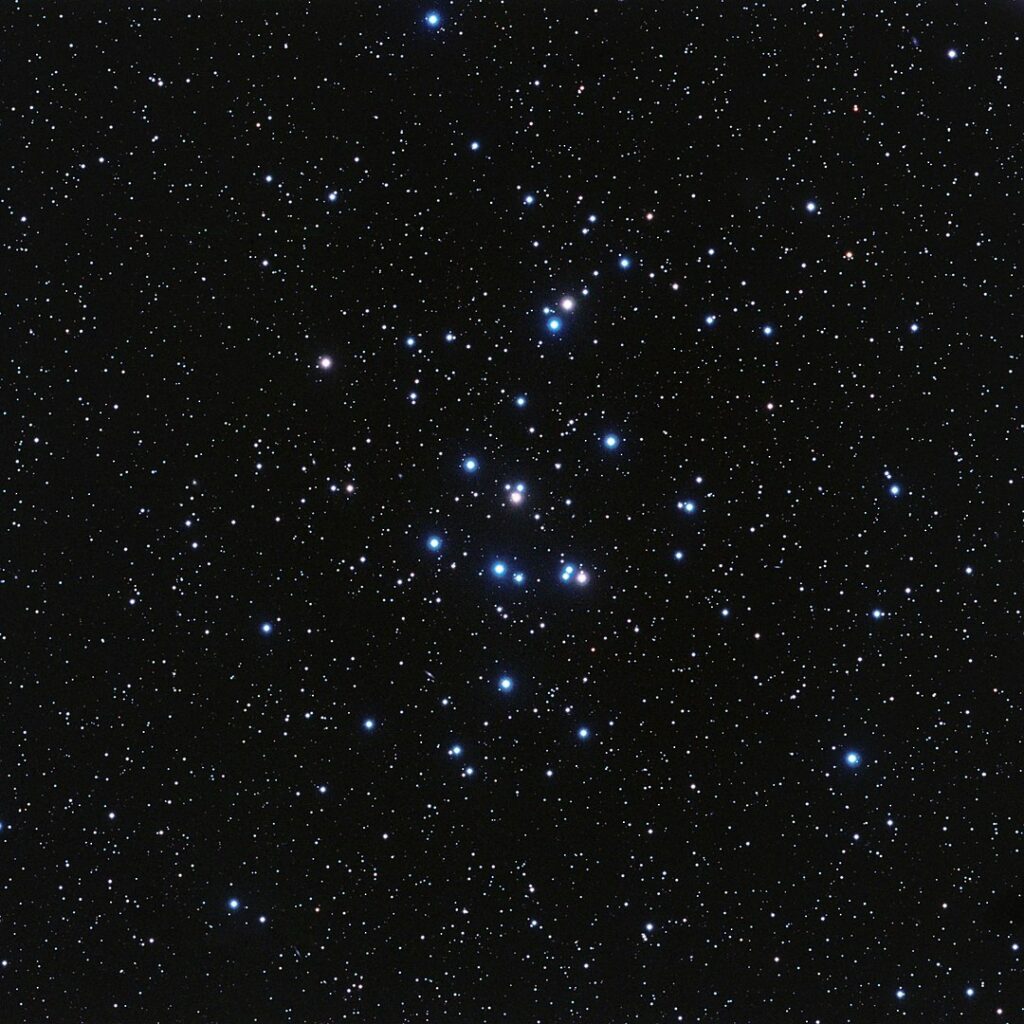
This week’s What’s Up is another instructional segment on how to do astronomy. Today, you will learn how to star hop to Messier 44 using binoculars.
Messier 44 (M44) is an open cluster in the constellation of Cancer that is more commonly known as the Beehive Cluster.
An open cluster is a group of stars that look like they’re close together but in most situations, are unrelated. In this case, at least a thousand stars in the Beehive Cluster are gravitationally bound together and have evolved as a group. There are a variety of stars of different types and ages in the cluster, which may have come from the same ancestor population as another famous open cluster, the Hyades in Taurus.
M44 is 187 parsecs from Earth, making it one of the closest open clusters. For comparison, Messier 45, another open cluster, is about 440 parsecs away from Earth. A parsec is a unit of distance equivalent to 3.26 light-years.
The problem with seeing deep sky objects is that they are faint. A telescope or binoculars helps with the dimness by collecting lots of light and focusing it on your eye. However, the field of view of a telescope is much narrower than the unaided eye, so it’s not as easy to find things.
The basic principle of star-hopping is to guide yourself to a deep sky object using a series of landmark stars, starting with those you can see unaided, and then using fainter stars through optics to finally arrive at the object.
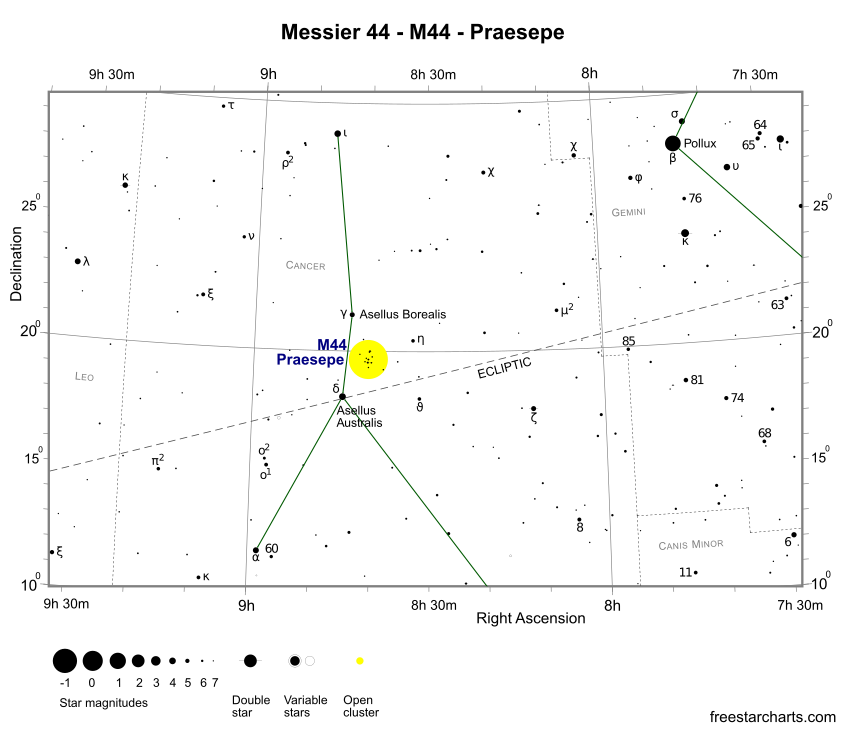
M44 has several good landmark stars with which to start a hop in binoculars. The best one of these is Pollux, in the constellation Gemini. To find M44 in 7×50 or 10×50 binoculars, find Pollux and center it in your view. Pollux is the brighter of the main pair of stars in Gemini.
Slowly move down toward the horizon. Note what the pattern of stars looks like at the bottom of the field of view and move the binoculars so that what was on the bottom is now at the top.
Repeat this process two times, and you should see a tight patch of stars peeking out of the left edge of the view. This is the cluster Messier 44.
In areas with high light pollution, it may be difficult to see more than a handful of stars, but it’s there. You can spend lots of time looking at all of the stars in the cluster. Using higher power optics, such as a telescope, will reward you with even more stars, though the star hop is more complicated and out of the scope of this segment. rimshot
I’ll be here all week; I work from home.
Whatever you do, take some time to go outside and look up.
This has been the Daily Space.
You can find more information on all our stories, including images, at DailySpace.org. As always, we’re here thanks to the donations of people like you. If you like our content, please consider joining our Patreon at Patreon.com/CosmoQuestX.
Credits
Written by Pamela Gay and Erik Madaus
Hosted by Pamela Gay and Erik Madaus
Audio and Video Editing by Ally Pelphrey
Content Editing by Beth Johnson
Intro and Outro music by Kevin MacLeod, https://incompetech.com/music/


 We record most shows live, on Twitch. Follow us today to get alerts when we go live.
We record most shows live, on Twitch. Follow us today to get alerts when we go live.